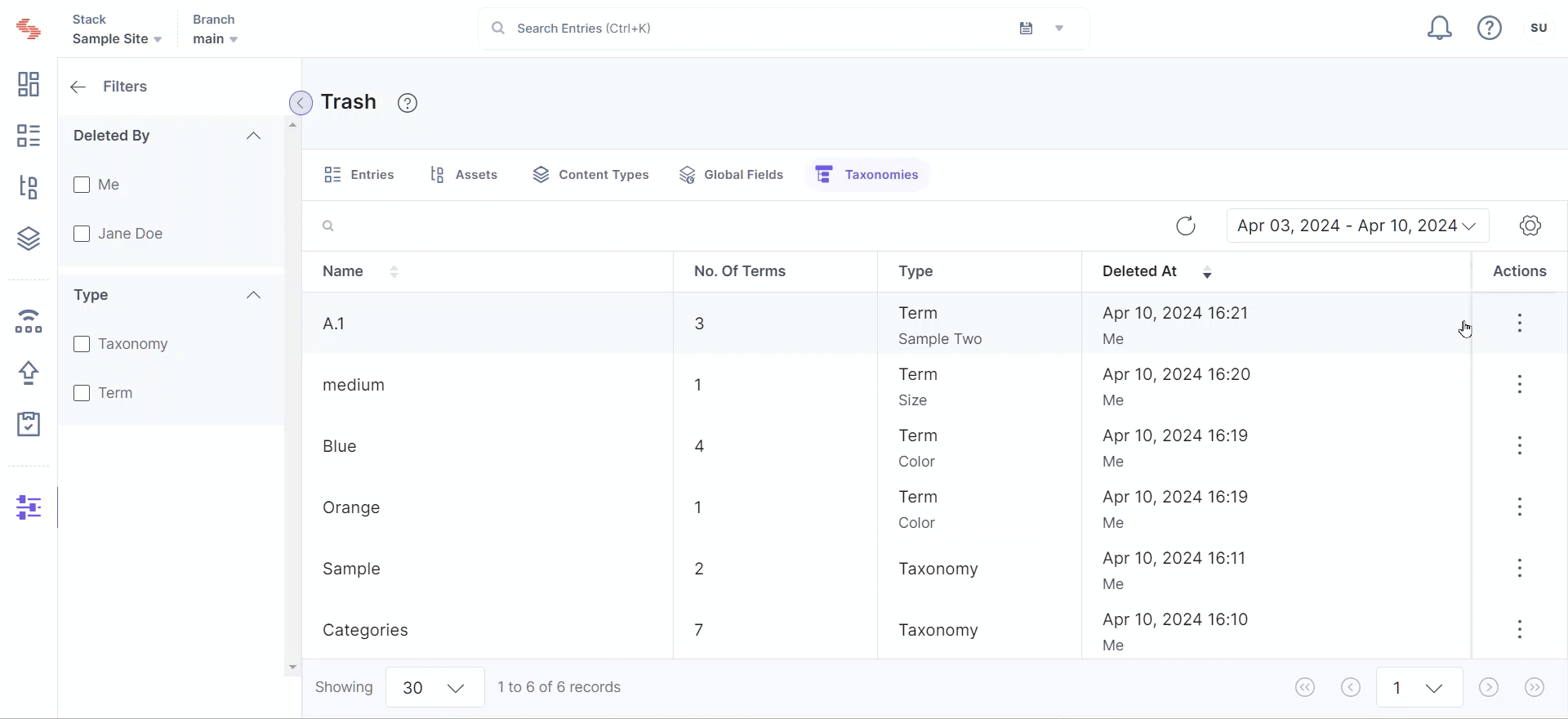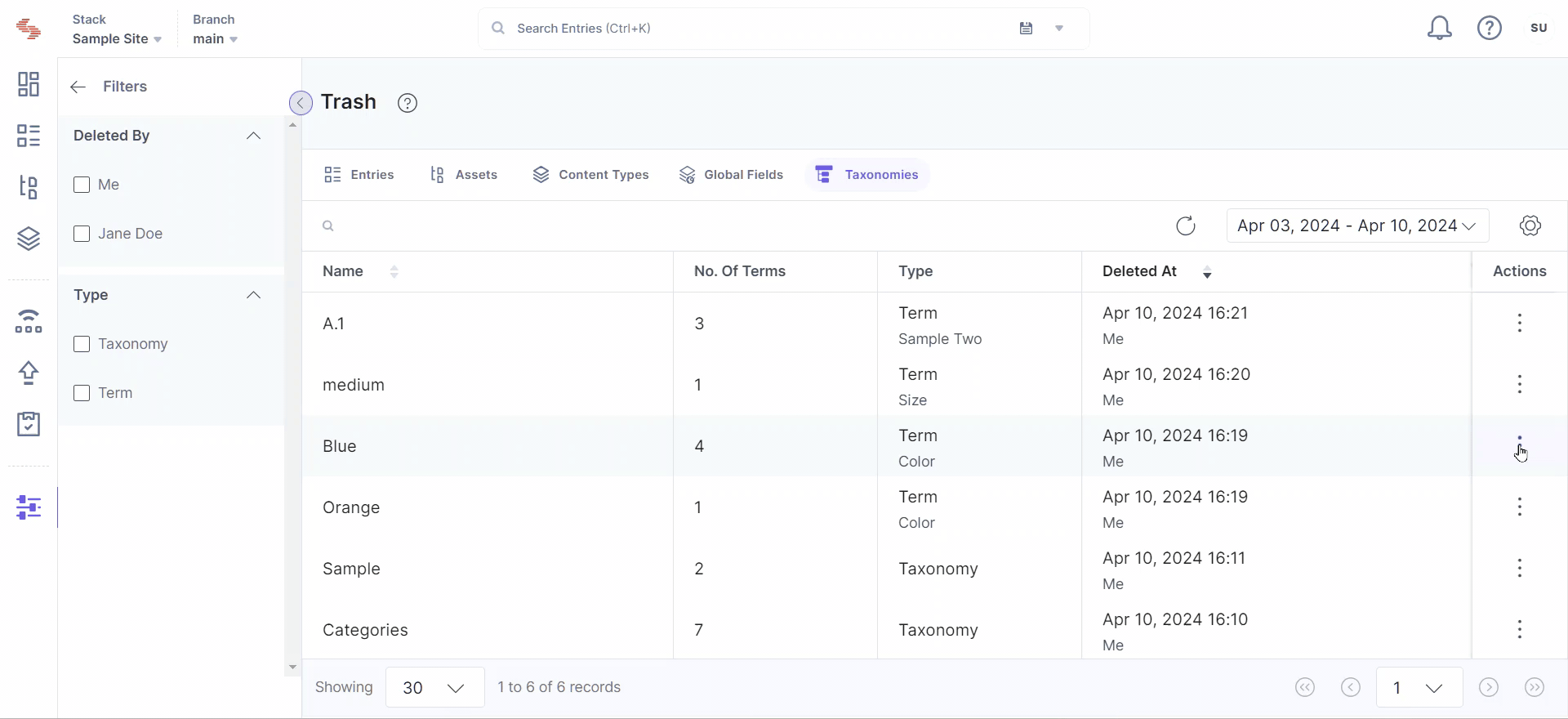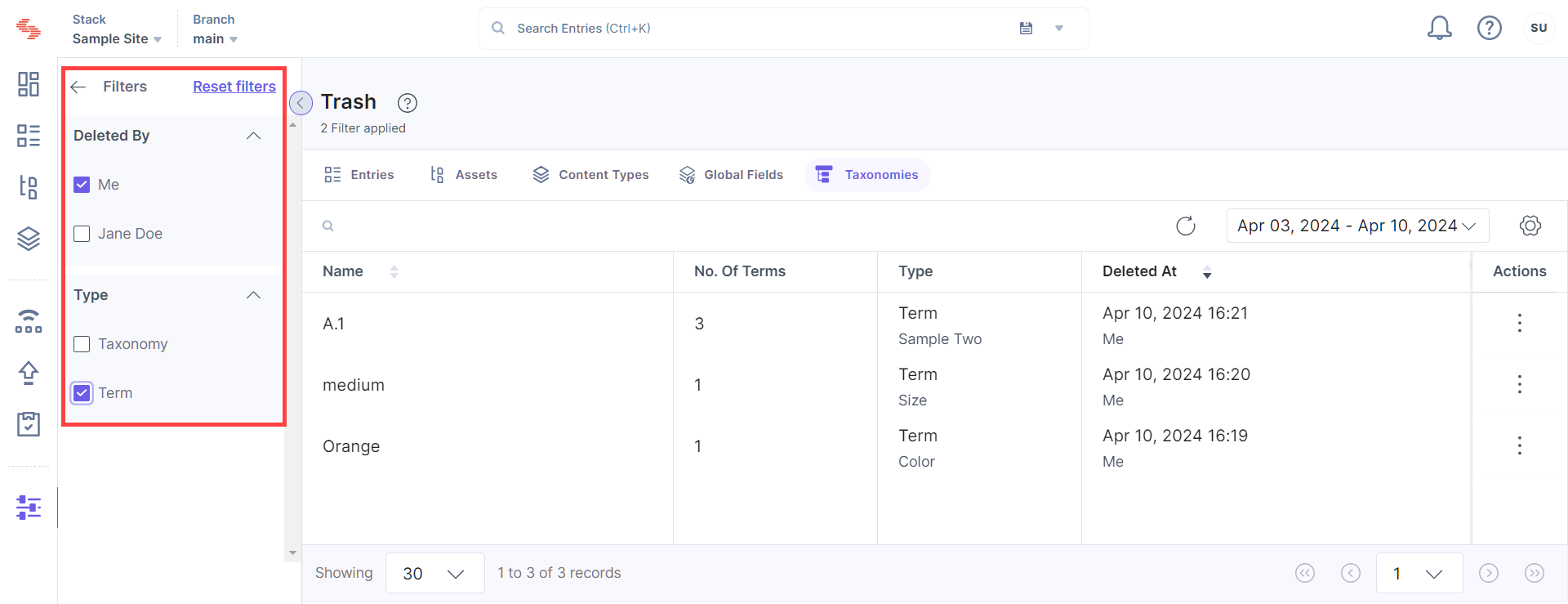Restore a Deleted Term
Deleted terms are maintained in the Trash for up to 14 days from the date of deletion. Within this timeframe, you can choose to restore them to their original state before they are permanently removed.
Warning: It is only possible to restore terms associated with existing taxonomies. For terms linked to deleted taxonomies, the taxonomy must be restored first
To restore a deleted term from the Trash, log in to your Contentstack account, and perform the following steps:
- Go to your stack where you want to restore a deleted term, navigate to the “Settings” icon (press “S”) on the left navigation panel, and select Trash (or press “alt + T” for Windows OS, and “option + T” for Mac OS).
- Click on the Taxonomies tab, locate the term you want to restore, and click on the “ellipsis” (three dots) in the Actions column.
- Additionally, you also have the option to inspect a term by clicking on View Details.

- Click on Restore, and in the modal that appears, choose between Restore with Entry Association or Restore without Entry Association based on your requirements.

Note: Restoring with Entry Association will reconnect the term to the entries where they were previously referenced. This action will increase the entry version since the terms are added back to the entry.
Filter Deleted Terms
By default, the Trash displays previously deleted terms in reverse chronological order under the Taxonomies tab i.e., recently deleted Terms will appear at the top. You can apply filters to refine the results and display only the required terms.
The Filters section, located on the right, displays the list of available filters which includes the following:
- Deleted By: Enables filtering of deleted terms based on the users who moved them to the trash
- Type: Allows filtering of deleted terms by their type, either by taxonomy or terms
Check the filter options that you want to apply. Click on Reset Filters to clear all the applied filters.

Note: While restoring a taxonomy or term, or when creating or deleting a branch, avoid performing additional delete or restore operations until the ongoing process is complete. This restriction is implemented to prevent conflicts, as multiple entries are modified simultaneously during these processes.




.svg?format=pjpg&auto=webp)
.svg?format=pjpg&auto=webp)
.png?format=pjpg&auto=webp)






.png?format=pjpg&auto=webp)